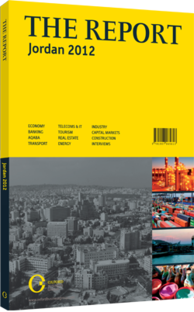Worthwhile widening: Greater penetration and diversity are needed to keep profits up
With solid fundamental growth, companies in Jordan’s insurance sector are currently focusing on improving technical profits and boosting penetration rates. As the 28 insurance providers compete to increase market share, customers are also benefitting from low premiums and high quality provision of services.
The sector witnessed a healthy increase in the value of gross premiums of 7% to JD436.7m ($613m) in 2011. Of this, motor insurance provides 42% of all gross written premiums (GWPs) according to figures from Jordan’s Insurance Commission (IC). One driver for this has been expansion in motor vehicle sales, a reflection of overall economic growth over the past years.
WORKING WIDER: But with lower economic growth affecting motor sales in 2011, insurers are looking to increase penetration in other sectors. Growth in medical insurance will rise as private companies compete in part by offering better health insurance packages. However, rising medical costs and a large number of providers result in a difficult market from which to achieve both growth and decent profits. In addition, the value of premiums rose by 13% during 2011, whereas claims increased by 22%, according to IC statistics. Life insurance has one of the highest growth potentials with relatively low penetration and claims amounting to just 7% of all premiums, compared to 9% of all premiums in 2011. IC data also shows the value of life premiums increased 7%, while claims increased by 5%.
LOCKED-IN: The life premium sector is largely dependent on the growth in middle-income workers, particularly earners with families and debt obligations, such as mortgages or other forms of loans. High rates of economic growth during the early 2000s helped boost income above rates of inflation and broadened the base of individuals looking to insure themselves. Now that growth is lower, incomes are rising no more quickly than inflation and mortgage uptake is lower, the amount of disposable income to spend on products such as life insurance is growing less quickly, hurting gains. In addition, life insurance is targeted at a particular level of earner. Insurance providers told OBG that depending on the type of coverage taken, life premiums average around $700 per year. This is viewed by many as too expensive for the current market climate, given that a majority of Jordanians earn less than JD300 ($425) per month, leaving them unable to afford products like life insurance. To see real growth in this sub-sector, premiums will need to drop and incomes to rise. Until then, insurers will tend to target middle to upper income earners, most of whom already have some sort of insurance product. The challenge will be in convincing these customers to add life insurance to an increasing number of policies, especially as medical cover is seen as offering more immediate and useful benefits.
OTHER OPPORTUNITIES: Marine and transport insurance represented 5.5% of total GWPs in 2011, but grew by 12% between 2010 and 2011. In addition, paid insurance claims amounted to less than a quarter of premiums during the same period. Therefore, despite the sector’s small size, highly profitable fundamentals mean these are attractive areas. The forecast for marine and transport insurance looks to be moderate, reflecting low economic growth due in 2012. However, as trade routes through Syria become less accessible and shipments have to be routed by sea, marine insurance from Aqaba may experience an increase in demand. Transport insurance may also see a boost as land trade is forced to travel north through Iraq to reach Turkey and onwards to Europe. One downside of the regional climate is a reduced demand for motor insurance cover from visitors to Syria – in the past a steady line of business. “There are significant opportunities for local and foreign insurers willing to enter the Iraqi market,” Imad Abdel Khaleq, the managing director of Jordan Insurance Company, told OBG. “This is especially true in the Kurdistan region, where we are seeing the rapid construction of new schools, hospitals and factories.” Overall, the main drivers of growth are linked with the economy. In such a climate there will be no quick wins, but a desire to grow should help enhance competitiveness.
You have reached the limit of premium articles you can view for free.
Choose from the options below to purchase print or digital editions of our Reports. You can also purchase a website subscription giving you unlimited access to all of our Reports online for 12 months.
If you have already purchased this Report or have a website subscription, please login to continue.

